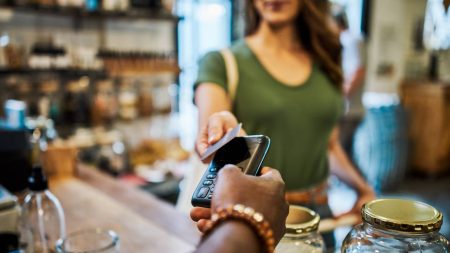The job market has historically been one of the biggest predictors of consumer spending and debt patterns. While the unemployment rate has risen from 3.4 percent last April to 4.2 percent at present, that’s still low, historically speaking. The 3.4 percent reading last spring was the lowest level since 1969. Even today’s 4.2 percent unemployment rate is considered roughly in line with full employment.
Of course, there have been some disconcerting headlines connected to the labor market. U.S. employers cut 275,240 jobs in March, the most in any month since May 2020 and the third-most since this particular tracker began in 1989, according to Challenger, Gray and Christmas.
Even if you aren’t among the currently unemployed, you may be worried about your job in the midst of recent economic uncertainty. The best time to take steps to prepare yourself for a period of unemployment is before it happens. Here are some actions to consider now to prepare yourself for possible unemployment in the future.
Have a question about credit cards? E-mail me at [email protected] and I’d be happy to help.
Boost your emergency savings
Ideally, everyone would have six months’ worth of expenses safely tucked away in the bank (you might need more if you’re a single bread winner or if you work in a specialized industry, perhaps less if you have access to multiple income streams). Of course, building savings is easier said than done. Nearly 6 in 10 Americans are uncomfortable with how much emergency savings they have and just 28 percent have six months’ expenses saved up, according to Bankrate’s 2025 Emergency Savings Report.
But you have to start somewhere. If you don’t have any savings right now, focus on setting aside that first $500 or $1,000. That alone could be enough to pay for a necessary expense such as a health, car or home insurance deductible. Work to build additional savings by transferring money from every paycheck into a high-yield savings account.
Consider applying for a new credit card
While there’s no substitute for an emergency savings fund, many people rely on credit cards when unexpected expenses pop up. In fact, the Emergency Savings Survey found that just 41 percent of U.S. adults would pay for a $1,000 emergency expense from their savings, while a quarter (25 percent) would finance the expense with a credit card.
I certainly recommend establishing and adding to an emergency savings account, but it’s also true that credit cards can be useful in a pinch. You need to be careful, of course. Credit card interest charges can be very costly, and sometimes people overspend when they use credit cards. Yet access to credit is important, and it enables a lot of people to buy groceries, gas and other essentials. I don’t want you to be in credit card debt, but if you’re unprepared for an unexpected expense, making sure you have access to credit can be a valuable lifeline.
Remember, though, that the best time to apply for a credit card is when you have a steady income. If you’re worried about future unemployment, you could consider applying for a card now when you’re more likely to be approved. Consider a no-annual-fee card, maybe one that offers cash back rewards. Earn rewards, keep the balance paid off and know that it’s available when and if that season of unemployment arrives and your savings can’t quite cover the gap.
Know that help is available
Lenders have hardship programs that can assist customers in need. Maybe there’s been a job loss, a divorce, a natural disaster or some other reason impacting your ability to pay your debts. Lenders can rearrange due dates and sometimes even let you skip a payment or two without penalty. It doesn’t hurt to ask. They might be willing to work with you on some accommodations that will make it easier to get back on your feet. Speaking up before your account goes delinquent can ward off damage to your credit score. Providing advance notice makes it more likely that the lender will be willing to provide some relief.
More on the current job market
Anytime we’re talking about the most job losses since the COVID-19 pandemic, that gets your attention. Federal employees have been prominently affected, due to the Department of Government Efficiency and its efforts to limit the federal workforce, and retail and technology have been the most prominent industries affected by recent private-sector layoffs.
A bit of good news is that the long-term unemployment rate has remained pretty low, suggesting that recently separated workers are finding new employment relatively quickly. I continue to believe that the job market and the overall economy are faring better than many believe. Despite downbeat consumer sentiment, which can mostly be attributed to the high cost of living and fears that tariffs will make the situation worse, the economy has been growing and consumer spending has been remarkably resilient, even as it has slowed in recent months.
Some of this slowing is by design, since the Federal Reserve raised interest rates sharply in an effort to bring inflation down. The policy has mostly worked, although it has been slower than many wished or expected. And it has come with consequences for borrowers (including the highest credit card rates on record last summer, with minimal relief since then). However, the latest tariff announcements made on April 2 — broader and deeper than most observers predicted — have initiated fresh waves of uncertainty. Can inflation continue to decrease despite these higher cost pressures? Will consumer spending be resilient enough to avoid a recession?
The relationship between jobs and loan delinquencies
The credit card delinquency rate, fueled by high prices and high interest rates, rose from 1.53 percent in the third quarter of 2021 (the lowest since this dataset began in 1991) to 3.24 percent in the second quarter of 2024 (the highest since 2011), according to the Fed. It has tailed off slightly over the past two quarters.
Credit card charge-offs (bills so delinquent the issuer has written them off as losses) hit 4.74 percent in Q3 2024, also the highest since 2011, and declined slightly in Q4 2024. Traditionally, there has been a close relationship between the unemployment rate and the charge-off rate. It makes sense, since you can’t get blood from a stone. If households don’t have money coming in, they might not be able to pay their bills. And credit cards are often among the first bills to go unpaid, since this is unsecured debt. A household in distress is typically more likely to prioritize shelter and transportation.
That said, credit card issuers don’t seem particularly concerned about the current delinquency rate. They mostly view the increases from the past few years in the context of normalization after exceptional lows during the pandemic (since many consumers used stimulus funds to pay off debt, and there were fewer things to spend money on). It is comforting that the delinquency rate has leveled off. Lenders seem convinced the worst is behind us, although you wouldn’t know it based upon depressed consumer sentiment and a myriad of commentators predicting a recession.
The bottom line
The economy is in better shape than many people realize, but uncertainty abounds. Payrolls expanded by a robust 228,000 jobs in March, but that already feels like a different era given the latest tariff announcements. Higher prices will squeeze already-strained consumers and could slow businesses’ hiring and investment plans. Will tariffs be the straw that breaks the proverbial camel’s back?
There’s only so much we can control. And it’s not worth getting too worked up about daily political discourse. Stay the course with your long-term investments, despite increased short-term volatility. And practice key fundamentals such as boosting your savings, watching your spending and paying down high-cost debt. These practices will serve you well in all economic climates.
Read the full article here












